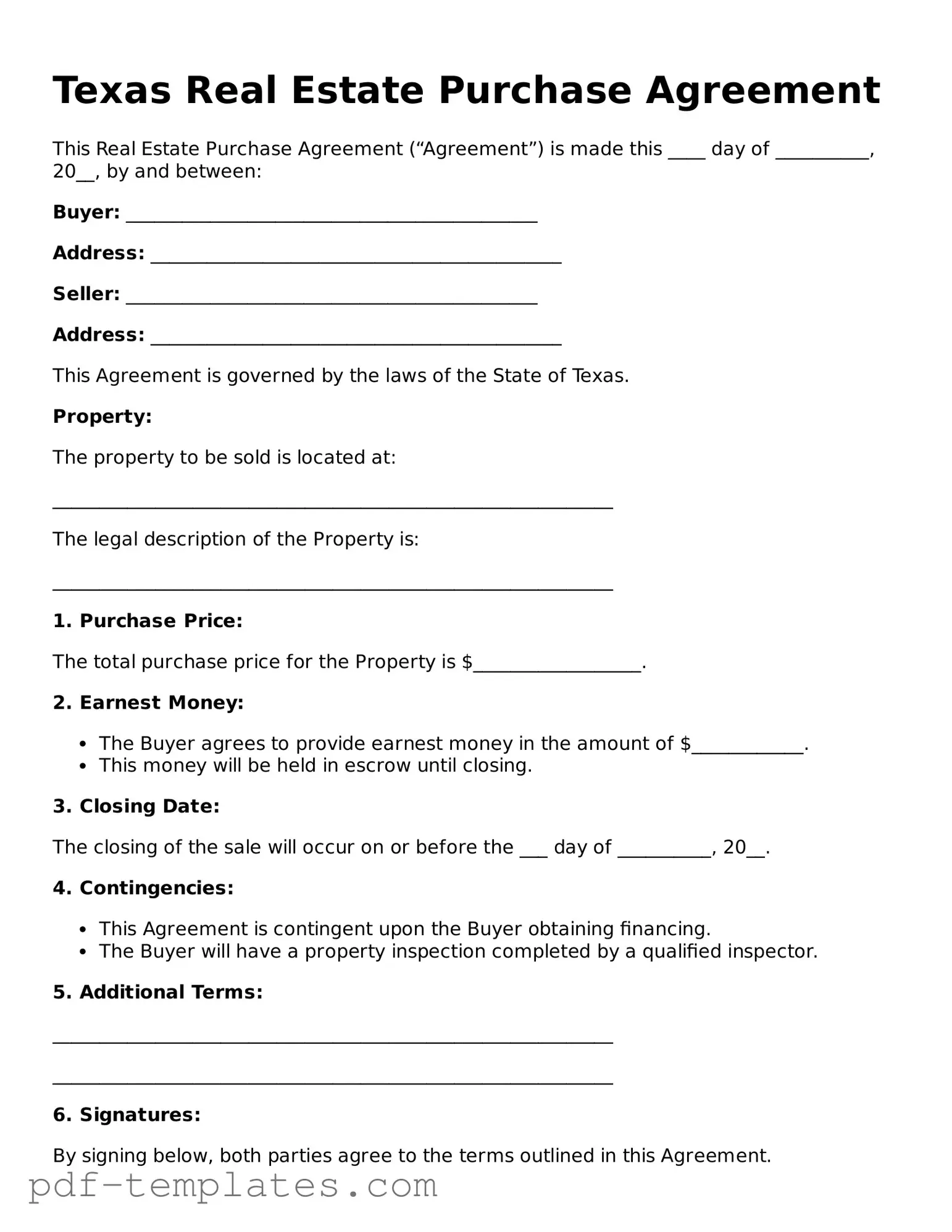The Texas Real Estate Purchase Agreement is similar to the Residential Purchase Agreement commonly used in many states. Both documents outline the terms of a real estate transaction, including the purchase price, financing details, and contingencies. They provide a structured format for buyers and sellers to agree upon, ensuring that essential elements such as property description and closing date are clearly stated. This helps to prevent misunderstandings and provides a legal framework for the transaction.
Another document that shares similarities is the Commercial Purchase Agreement. Like its residential counterpart, this document details the terms of a sale but is tailored for commercial properties. It addresses unique considerations such as zoning laws, lease agreements, and business operations. Both agreements serve the same fundamental purpose: to formalize the sale and protect the interests of both parties involved.
The Offer to Purchase form is also comparable to the Texas Real Estate Purchase Agreement. This document is often used as a preliminary step in the buying process, where a buyer expresses interest in a property and outlines their proposed terms. While the Offer to Purchase may lead to a more formal agreement, it shares the same foundational elements, such as price and conditions, that will eventually be included in the final purchase agreement.
The Lease Purchase Agreement is another document that bears resemblance to the Texas Real Estate Purchase Agreement. This agreement allows a tenant to lease a property with the option to buy it later. It combines elements of both leasing and purchasing, outlining the terms of the lease while also detailing the conditions under which the tenant can purchase the property. Both documents require clarity on terms and conditions to protect the rights of both parties.
The Land Contract, or Contract for Deed, is similar in that it allows for the purchase of property over time. In this arrangement, the buyer makes payments directly to the seller, who retains legal title until the full purchase price is paid. This document outlines payment terms, interest rates, and what happens if the buyer defaults, paralleling the Texas Real Estate Purchase Agreement in its goal of establishing clear expectations between buyer and seller.
The Exclusive Right to Sell Agreement is another related document, particularly relevant for real estate agents. This agreement gives an agent the exclusive right to sell a property, detailing the commission structure and the duration of the agreement. While it serves a different purpose than a purchase agreement, both documents are critical in the real estate transaction process and emphasize the importance of clear communication and understanding between parties.
The Seller Financing Agreement is also comparable, as it outlines the terms under which a seller provides financing to the buyer. This document details payment schedules, interest rates, and consequences of default. Like the Texas Real Estate Purchase Agreement, it seeks to protect the interests of both parties and ensures that all terms are clearly articulated to avoid future disputes.
The Short Sale Agreement is another document that shares similarities with the Texas Real Estate Purchase Agreement. This type of agreement occurs when a property is sold for less than the amount owed on the mortgage. It requires the lender's approval and outlines the terms of the sale, including how the proceeds will be distributed. Both agreements aim to provide clarity and protect the rights of all parties involved in a complex transaction.
Lastly, the Quitclaim Deed, while primarily a transfer document, is similar in that it facilitates the transfer of property ownership. This document is often used in situations where the seller may not have clear title or when the parties have a close relationship, such as family members. While it does not detail the terms of a sale like the Texas Real Estate Purchase Agreement, it is still an essential document in the realm of real estate transactions, emphasizing the need for clear and documented agreements in property transfers.
